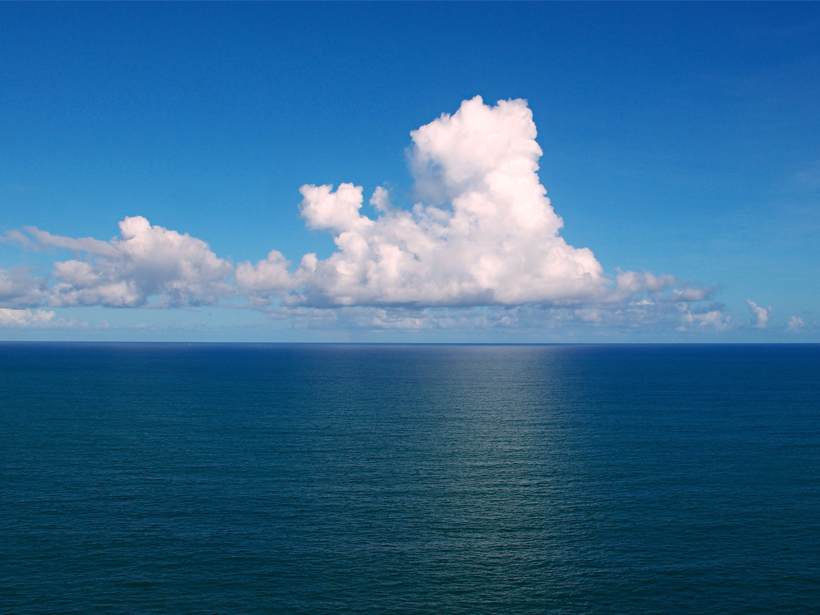Source: Journal of Geophysical Research: Oceans
Water may be a basic requirement for life on Earth, but the compound is far from simple. Although a single molecule of water is composed of one atom of oxygen bonded to two hydrogen atoms (H2O), a collection of purely H2O molecules exists only as a gas. The individual H2O molecules have small chemical charges with the H atoms being positive and the O atoms being negative. This causes them to bond together, much as a collection of tiny magnets would. For water to be liquid—and form oceans, lakes, rivers, and rain—the single H2O molecules have to clump together to form much larger, heavier structures.
More than 50 years ago the chemist G. E. Walrafen identified the basic rules for this phenomenon and found that the minimum energy configuration was a five-molecule tetrahedral structure now known as the Walrafen pentamer, (H2O)5. Liquid water exists in a bimolecular form, with the dominant species being the hydrogen-bonded forms (the pentamer and a large, rapidly exchanging pool of related structures) and the single H2O molecules. The ratio is driven by temperature, and the hotter the water is, the more of the H2O form is present. But by how much? The actual amounts have been difficult to quantify.
In a recent study Brewer et al. used the technique of laser Raman spectroscopy to solve this problem. Here laser light is scattered by water molecules and loses some energy, becoming slightly more red in the process. This light is captured, and the spectrum is examined. The difference between the pentamers (and related structures) and the single H2O molecules is small, so great care is needed, and the team had to devise new ways to process the spectra.
This process yielded a collection of peaks representing the molecules present, and two increased as temperature rose, thus identifying those arising from the vibrations of the H2O molecules. By going back to the original work on the energetics of melting ice published a half century ago, the team found that at the exact point where ice bonds are broken and water becomes liquid 10% of the fluid must be in the non-hydrogen-bonded form. This result provided the essential tie point for the precise calculation of molar quantities.
From this discovery it is clear that over 80% of the water in the oceans exists in the hydrogen-bonded form, and nowhere in the ocean does the fraction of H2O exceed 20%. The molecular species have very different functions: The free H2O molecule is transferred across the air-sea interface, and the (H2O)5 species absorbs sound and, by interleaving with its neighbor pentamers, accounts for the compressibility of water. The presence of sea salts adds some complexity, and the case for the freshwater bodies of the world is a little easier to treat. But overall, Earth scientists now have a new quantitative tool to gain insights into problems as diverse as the consequences of warming of lakes and oceans and the transport of water across cellular membranes. (Journal of Geophysical Research: Oceans, https://doi.org/10.1029/2018JC014457, 2019)
—Emily Underwood, Freelance Writer
Citation:
Underwood, E. (2019), Water, water everywhere—But how much H2O?, Eos, 100, https://doi.org/10.1029/2019EO122115. Published on 02 May 2019.
Text © 2019. The authors. CC BY-NC-ND 3.0
Except where otherwise noted, images are subject to copyright. Any reuse without express permission from the copyright owner is prohibited.

